It’s a long way to Tipperary – but not so much when you’re off on another stonie adventure.
Caravantasia is the brainchild of Tom Pollard and Heather Loughlin – essentially it is a glamping site which hosts workshops in the line of crafts & heritage
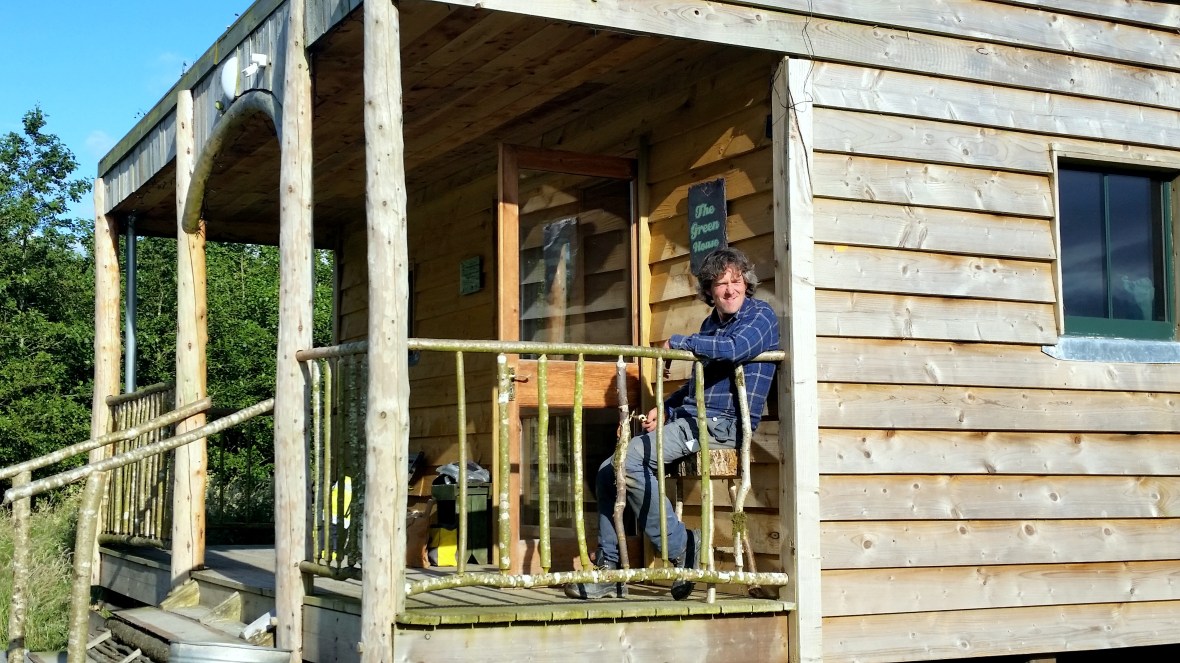 We had the luck to stay in this beautifully refurbished yoke
We had the luck to stay in this beautifully refurbished yoke
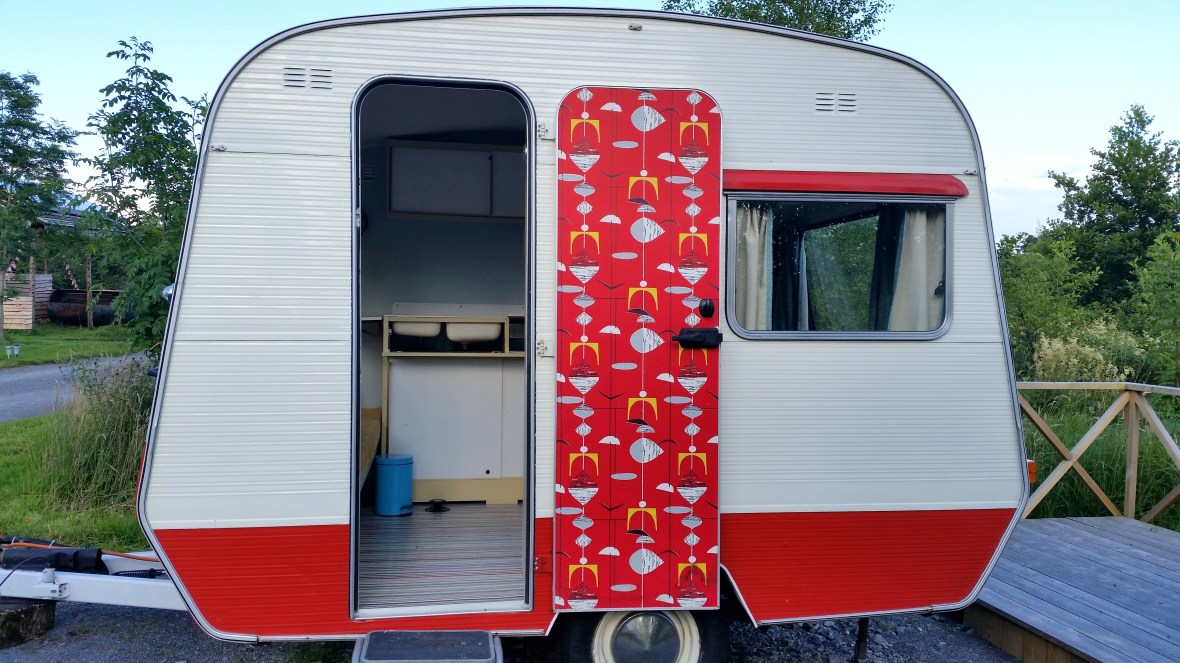 Unlike Donegal, Tipperary is full of mature trees. This site has wonderful sculptures by Ricthie Clarke such as this figure of Danu, the Mother goddess, carved from chestnut.
Unlike Donegal, Tipperary is full of mature trees. This site has wonderful sculptures by Ricthie Clarke such as this figure of Danu, the Mother goddess, carved from chestnut.
It was great to get stuck into the work
Some serious lime business followed. A simple test shows how a cobble of limestone (left) differs from a cobble of the same which has been baked in a kiln (right)
When water is added the baked limestone, which is thirsty, soaks it up, creates heat & releases steam.
Baked limestone in its pure form is called quicklime, and looks like this when you buy it
 Mixed in proportions of three parts sharp sand to one part quicklime
Mixed in proportions of three parts sharp sand to one part quicklime
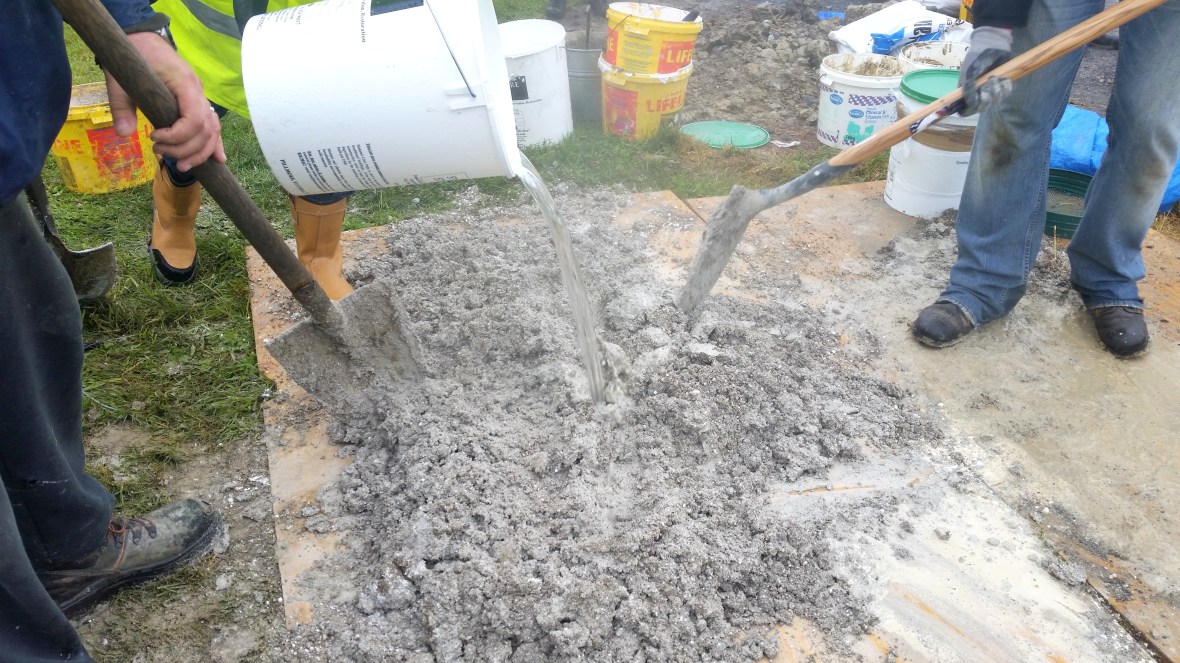 It isn’t advisable to do this in a cement mixer, as the heat generated can bust out the seams of the mixer bowl. Use the back of the spade to slake the mix.
It isn’t advisable to do this in a cement mixer, as the heat generated can bust out the seams of the mixer bowl. Use the back of the spade to slake the mix.
Easy to mix & stiffens quickly. CHEAP. Nice and sticky. Strong, but not too strong, which lends great workability
 Eoin Madigan (left; stonemason & lime expert) thinks hot lime mixes are the way forward, being that NHL (Nateral Hydraulic Lime, as was used in our cottage restoration) is now thought to be TOO strong for most restoration work.
Eoin Madigan (left; stonemason & lime expert) thinks hot lime mixes are the way forward, being that NHL (Nateral Hydraulic Lime, as was used in our cottage restoration) is now thought to be TOO strong for most restoration work.
He argues that NHL (currently only available from quarries in France, Germany or Portugal) quite possibly have unknown ingredients added, which their manufacturers seem unwilling to divulge.
Whereas our NATIVE quicklime is pure. We know what it is. We can match like with like by using it to restore native buildings.
Tipperary Sandstone is native here – used for this lovely outdoor kitchen
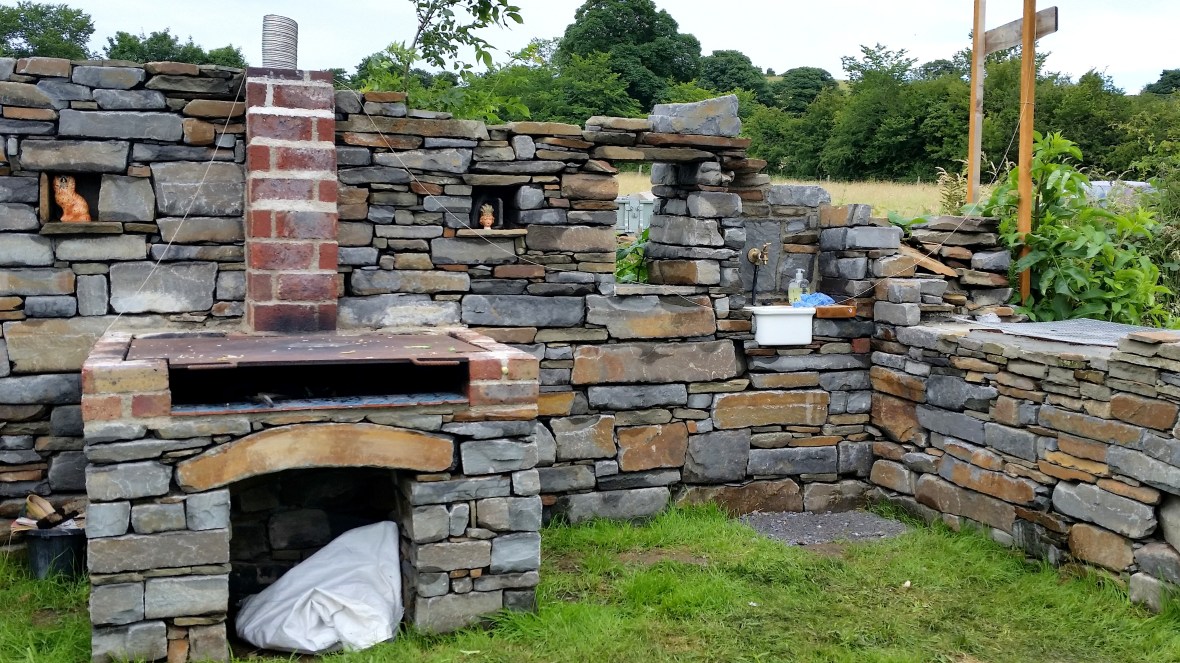 Care & attention to detail shown to the whole site makes Caravantasia a pleasure – a credit to its creators
Care & attention to detail shown to the whole site makes Caravantasia a pleasure – a credit to its creators
As well as the Lime stuff, a workshop in dry stone walling by D.S.W.A.I members took place
Inspirational speakers like Julia Gebel (expert in hand cut architectural stonework) talked about how to correctly restore listed buildings.
Peter Cowman architect & eco-builder, sparked a fascinating discussion about mortgage free, natural building.
Structural engineer Lisa Edden and Eoin Madigan, both members of Building Limes Forum Ireland also delivered excellent talks.
But nothing feels better at the end of a busy event, than to get your hands on a lump of stone.
And we went smiling all the long way home!




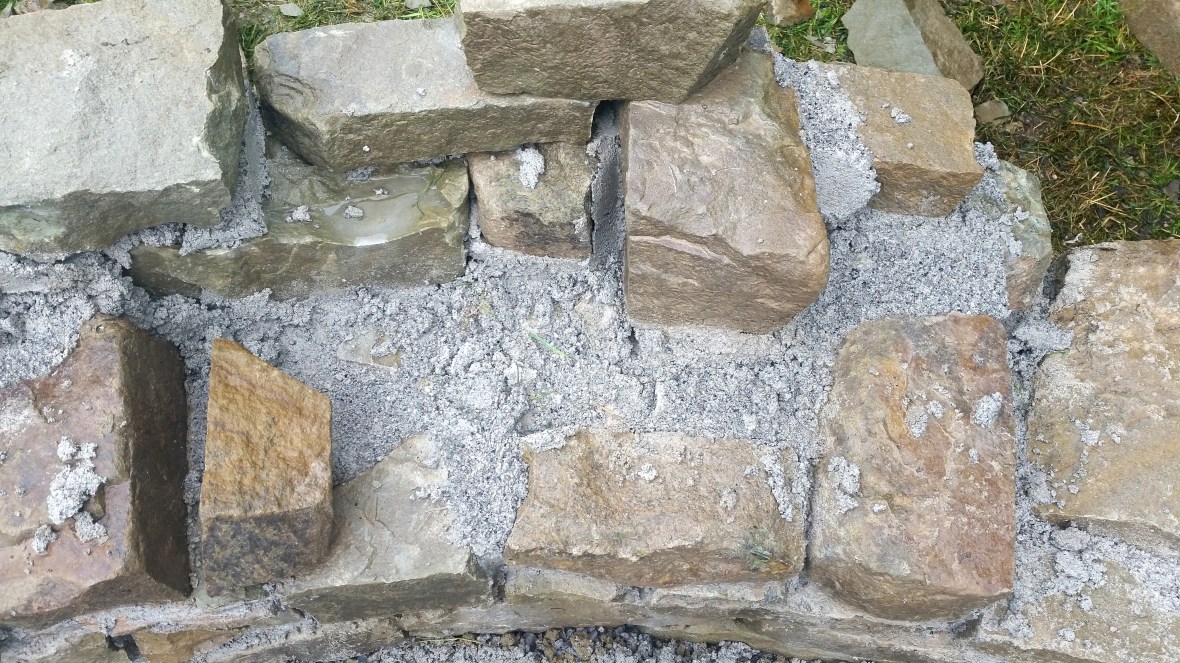









I am interested in your comment that the non indigenous lime commercially available may have “other stuff” mixed into it. It is irksome that one needs go abroad for what was once commonly available in every townland from its own lime kiln.
Although ruined, I found at least two marked on my ancient O/S map of which none of my elderly neighbours were even aware.
Yet another example of the old saw, “burn everything british (foreign) except coal” – them thar foreeners caint be trusted.
And when we have our own resources it is egregious to seek them abroad, as if intrinsically ‘better’.
Put it this way – when a manufacturer is coy about listing ingredients – one is entitled to suspect, as some Lime experts do, that chemical hardeners might be added to meet building regulations. The whole deal about going abroad for what once was (and still could be) commonly available, is worse than irksome – certainly in a small, agricultural country like ours – it is criminal. The so called ‘food’ industry being the prime example – people now eat overpriced cardboard where once they grew their own wholesome dinners.
We are currently entertaining the idea of restoring a rather large, but reasonably well preserved, lime kiln near Glencolmcille, to do a burn for next year’s Stone Festival. More research has to be done first!
Are the ‘additives’ not just pozzolans – clay etc… that stimulate a chemical set in NHL limes when the lime doesn’t have those impurities in it itself? https://en.wikipedia.org/wiki/Pozzolan I don’t think there’ll be anything conspiratorial in it. If in doubt, stick to slaked lime.
Hello I have been following your posts for some time now and I love the work that you have done on the cottage. Can you tell me the wood sizes for the rafters and the ridge beam that were used on the cottage. I keep referring back to the posts for inspiration on my own renovation of a 1700’s farmhouse here in France.
Thanks. Alicia
Hi Alicia
For the ridge board we used 8”×1” pine.
For the rafters 6″×2″ of same.
The pitch of our roof is 36 degrees and we left a good overhang (2 foot) which has really helped protect the walls.
Good luck with your farmhouse – send us some photos if you like.
Louise
Reblogged this on ecobuildstone.